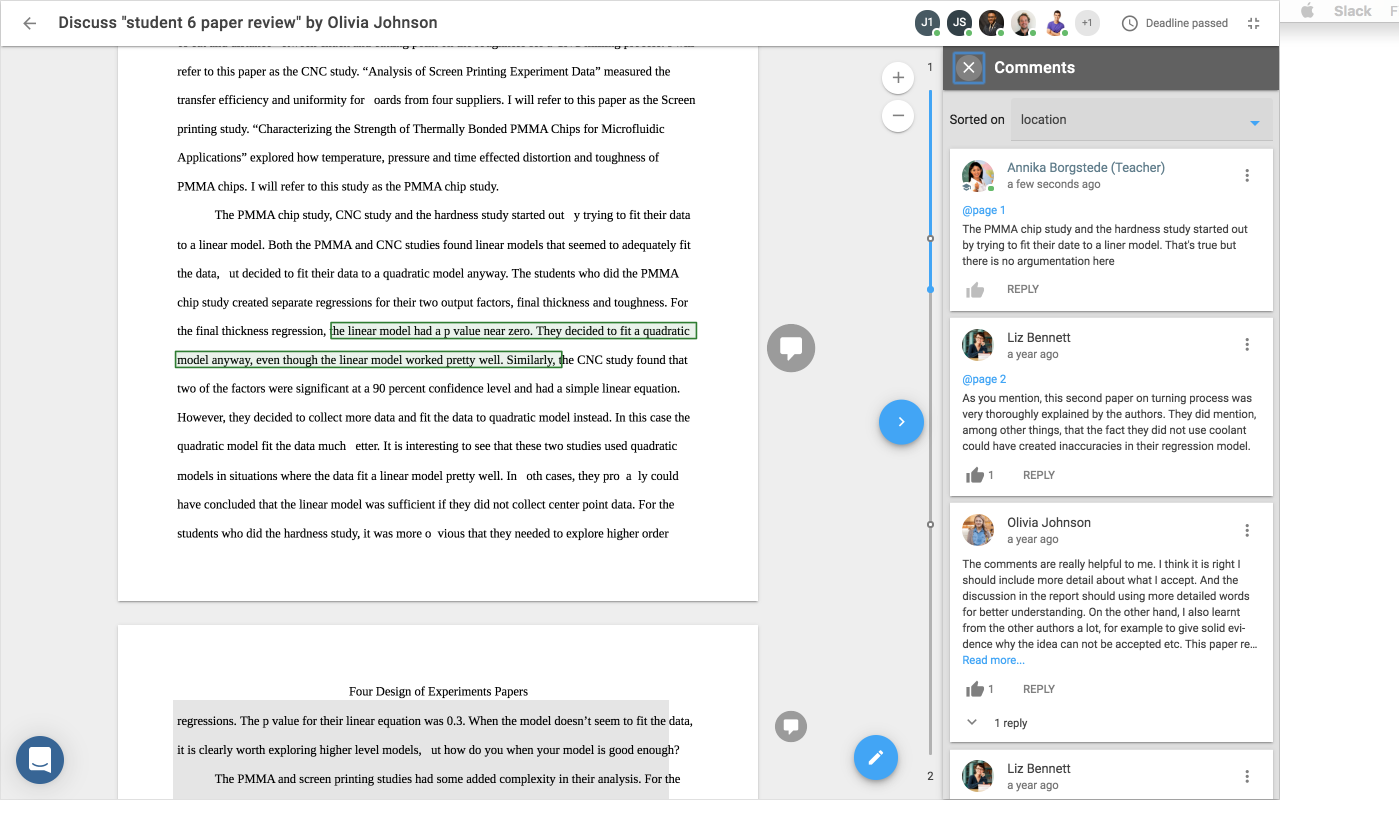FeedbackFruits originated out of a desire to stimulate interaction between students and teachers. For a long time, lectures have been a one-way delivery system for information, offering little opportunity for student engagement. Overcoming this obstacle is central to the company’s mission: helping teachers build engaging learning activities.
FeedbackFruits has developed a suite of pedagogical tools that integrate into learning management systems (LMSs) to provide teachers extensive capabilities in their course designs, and improve the quality of students’ learning experience. In terms of user experience, all tools in the suite have a similar look and feel, which flattens the learning curve for teachers and students.
The available tools in the suite support learning activities related to pedagogical themes such as: peer assessment, interaction within study material, collaborative learning, team based learning, skill feedback and engaging online discussions.
(Peer) Feedback
(Peer) feedback tools structure and streamline the process of students reviewing skills or work from peers or teachers reviewing skills/work from students. Learning activity examples: Students peer assess each others’ draft group reports before the final hand-in, students give feedback on their peers’ collaboration skills so teachers discover free riders in group projects, teacher evaluates students’ assignments or in-class presentations according to his/her own rubric, students receive AI-powered instant feedback on their written work.
Tools: Peer Review, Group Member Evaluation, Assignment Review, Skill Review, Automated Feedback
Interactive Study Material
Interactive study material tools enhance the process of students consuming study content such as articles, videos or podcasts. The problem is that students are often only passively consuming content. These tools add interactivity and foster social learning to enhance the study experience. Learning activity example: Ask students to add comments in readings or videos prior to a lecture (flipping the classroom).
Tools: Interactive Video, Interactive Document, Interactive Audio, Comprehension
Online Discussion
Online discussion tools have the purpose of encouraging critical and reflective thinking and generating dialogue with peers. This is done by providing explicit instructions and facilitating a step by step meaningful dialogue. Learning activity example: Organise an open-ended, formative or summative discussion at scale.
Tool: Discussion Assignment
Interactive Classrooms
Interactive classrooms tools are built to foster engagement in class. It allows you to add interactive questions to existing powerpoint slides. A low-barrier solution that avoids students to passively attend your lectures. Learning activity example: Students anonymously answer controversial questions in class.
Tool: Interactive Presentation

















